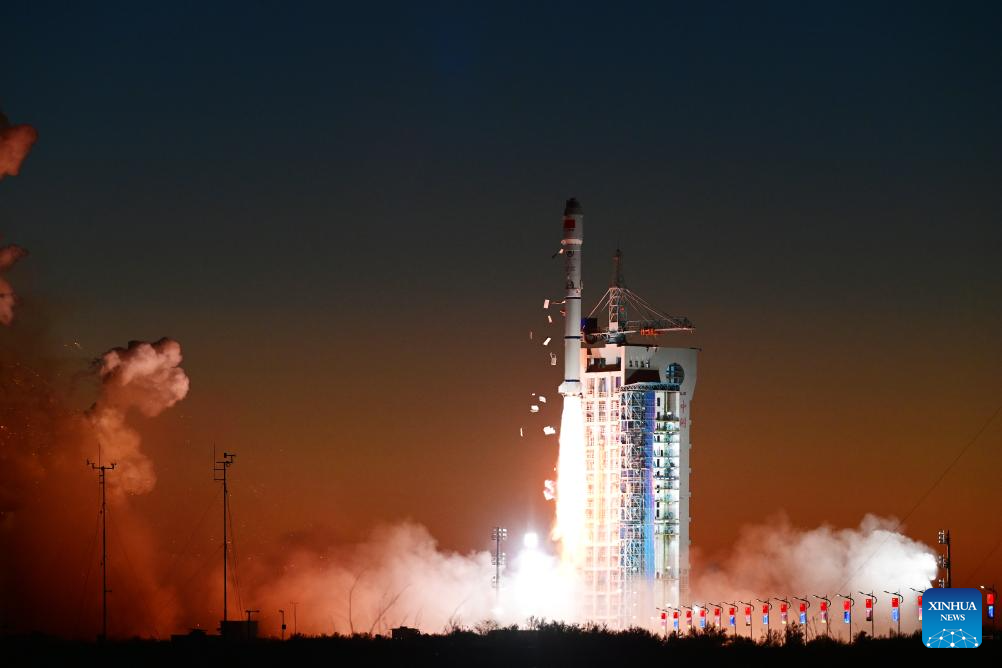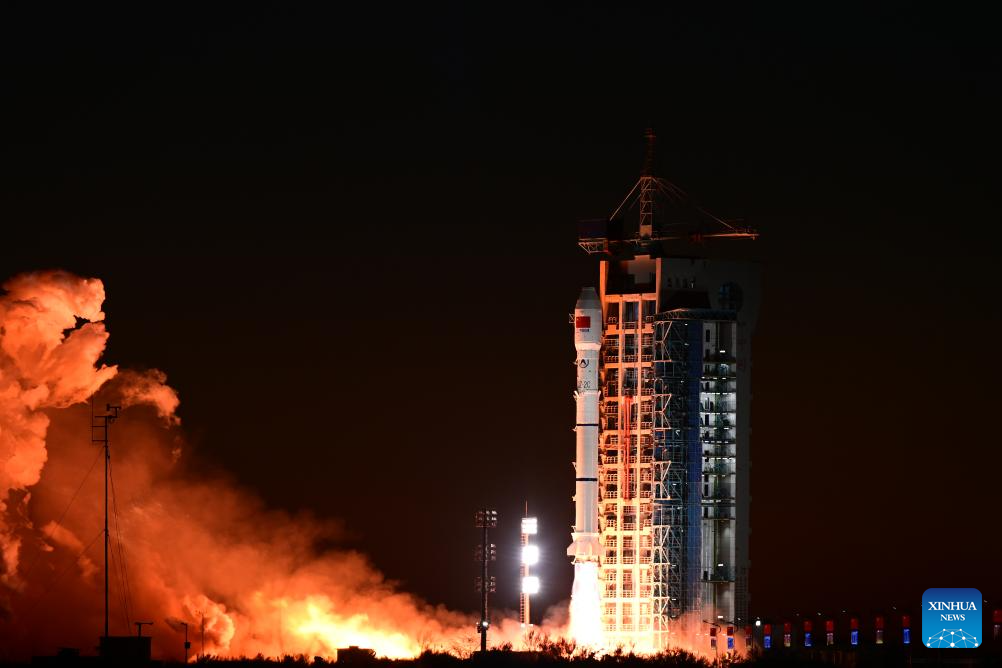
 0 Comment(s)
0 Comment(s) Print
Print E-mail Xinhua, November 25, 2024
E-mail Xinhua, November 25, 2024
A Long March-2C carrier rocket carrying two satellites blasts off from the Jiuquan Satellite Launch Center in northwest China, Nov. 25, 2024. The rocket blasted off at 7:39 a.m. (Beijing Time) and sent the pair of satellites, Siwei Gaojing-2 03 and Siwei Gaojing-2 04, into the preset orbit. [Photo/Xinhua]
China launched a Long March-2C carrier rocket on Monday, placing two satellites into space.
The rocket blasted off at 7:39 a.m. (Beijing Time) from the Jiuquan Satellite Launch Center in northwest China and sent the pair of satellites, Siwei Gaojing-2 03 and Siwei Gaojing-2 04, into the preset orbit.
It was the 547th flight mission of the Long March series of rockets.
Developed by the Shanghai Academy of Spaceflight Technology, Siwei Gaojing-2 03 and Siwei Gaojing-2 04 are commercial microwave mapping satellites owned by China Siwei Surveying and Mapping Technology Co., Ltd.
According to the developer, the Siwei satellites are equipped with high-precision radar payloads, providing the world with advanced all-day, all-weather and high-resolution radar images.
They will join previously launched optical satellites to form a network in orbit, further enhancing the capabilities of optical and synthetic aperture radar (SAR) integrated services.
SAR uses radio waves to produce high-resolution images rather than using the light from the sun as optical images.
In addition, the academy noted that the utilization of new technologies in the two new satellites would enhance payload efficiency by 25 percent and greatly improve the precision of surveying and mapping products, meeting China's robust demands for commercial surveying and mapping data.
The satellite maker is confident about the market prospects. It said the duo of Siwei satellites would be mainly used in sectors such as natural resources, urban safety, emergency management and maritime applications. The high-resolution and high-quality radar images will support updating basic surveying and mapping, agricultural production and ecological environment monitoring in China.
Once operational, the two satellites can quickly determine the scope of disasters regardless of weather conditions, enabling early warning and identification of floods and geological disasters. This makes them "the first line of defense for disaster prevention and reduction," the academy said.

A Long March-2C carrier rocket carrying two satellites blasts off from the Jiuquan Satellite Launch Center in northwest China, Nov. 25, 2024. The rocket blasted off at 7:39 a.m. (Beijing Time) and sent the pair of satellites, Siwei Gaojing-2 03 and Siwei Gaojing-2 04, into the preset orbit. [Photo/Xinhua]